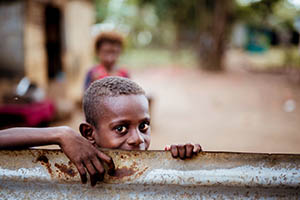
Artificial Intelligence can help those most in need
With the many, many uses of AI, we’re seeing an increase in researchers, scientists, organisations and start-ups of all kinds looking at ways we can leverage this technology for good.
Whilst ‘high-technology’ has become synonymous with high wages, and high investment, there are loads of projects out there applying this technology to poverty reduction. Harnessing the power of AI to help the most desperate in our society is a fantastic way to use it.
So, how is this being done?
Identifying poverty
Recognising the causes of poverty is key in looking at how to tackle the problems using technologies. From natural disasters, war and conflict, affordable food, lack of education and life skills. AI can help to identify the region’s most in need of help. Tackling poverty in specific regions through improving farming lands and agriculture, increasing education and helping inhabitants learning new skills to support communities. AI can also help with aid distribution in poorer and war-torn areas, or where natural disasters have caused devastation.
Identifying poverty, and the regions that are most in need is a key component in being able to tackle the problem of poverty. Satellite imagery is helping researchers do just this. An abundance of images taken by satellites on a constant stream can lend a hand to identifying global activities that reflect poor and rich regions – areas with a high density of light at night are typically wealthier than those in darkness, with little or no access to electricity over nighttime periods.
Marshall Burke, Assistant Professor at Stanford University’s Department of Earth System Science used satellite images of areas in daylight in research in order to ‘fill in the gaps’ of nighttime images alone in identifying the most poverty-stricken regions in parts of Africa. Feeding an algorithm with both night and day satellite images of Rwanda, Nigeria, Uganda, Malawi and Tanzania, they were able to identify signifiers in the daytime pictures. Combining both image sets, this helped the computer predict poverty in these regions. When compared with survey data obtained from households within them – this led Burke and his team to be able to predict poverty with an 81-99% accuracy as compared to the night time satellite images alone. AI, in this case, can help with the identification of areas most in need of aid, and also help organisations and aid workers on the ground in locations to measure how effective their efforts are in combating poverty.
Education
Poverty and lack of education are highly linked, AI can help impact education levels in poorer areas. We could soon see intelligent chatbots being able to stand in as teachers for students without access to other forms of schooling. As long as there was access to a computer/internet connection, an AI-teacher could guide pupils through a syllabus using real-time analytics and machine learning to assess the education and learning level and skills of individual pupils. This could entirely eradicate the money-barrier and inequality that so many across the world come up against in education.
Another way in which AI can go some way in promoting education levels is through tailored learning. Everyone learns in different ways, some people are listeners, others more visual, and others learn by doing things hands-on. Rather than current methods of just one form of learning we see in our education system which doesn’t benefit all students. AI could help identify students learning needs and optimise the process. By giving all students the same start and level of teaching will allow those from poorer backgrounds to gain the skills needed to get ahead and level the playing field more so when it comes to careers.
Agriculture
Another way in which AI is being used to tackle poverty is through improving agriculture. Many regions where poverty is rife, many people make their living through agriculture. FarmView is a project launched by AI specialists at Carnegie Mellon University, using robotics and artificial intelligence to improve the sustainability of staple food crops in developing countries. The crop ‘sorghum’ is being studied by researchers using drone technology, robotics and machine learning – analysing the best way in which to optimise the growth of these crops. Sorghum is used for food, drink production and biofuels, so the opportunity to grow this would greatly benefit poverty-stricken areas that rely on agriculture as their main source of income. Machine Learning helps aid this by feeding the data collected over the growing season into an AI model that could help predict the best ways for farmers to grow this crop.
Social Good Projects
Tech giant IBM is also looking at different ways to alleviate poverty through the application of AI, along with other societal issues, in their project ‘Science for Social Good’.
One of the projects within this is the ‘Emergency Food Best Practice’, where they have paired up a New York-based nonprofit St John’s Bread & Life who feed those most in need within the city. Through this partnership, IBM plan to develop a tool based on the data from the non-profit’s distribution model and share it with other similar non-profits. St. John’s Bread & Life help serve more than 2000 meals a day, so this project will go a long way in benefiting those most in need.
Another way in which IBM is using technology to make a big impact on poverty is through the ’Simpler Voice: Overcoming Illiteracy’ project. This project uses AI to help adult learners who are illiterate, or have low literacy skills, navigate texts with more confidence by translating texts and presenting the basic meaning through visuals or simple spoken word. This will help users overcome difficult obstacles in day to day life.